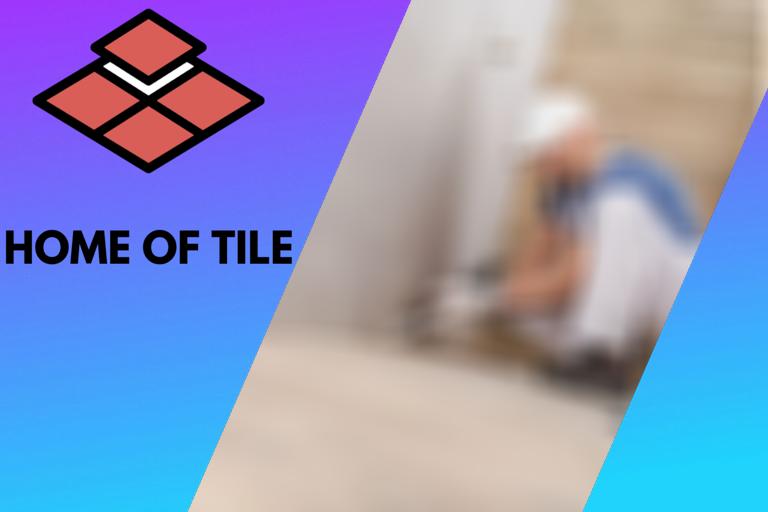Tiling to the ceiling, 6 things you should know
If you are thinking of renovating your bathroom, consider adding tiles to the ceiling. It adds an extra flair and new look and also comes with several advantages. Tiles act as a waterproof barrier that can help to protect it from damages, and they are durable and can last for decades. New trends in wall and floor tiles will keep your home looking trendy, and tiles are easy to clean.

Contents
- 1 Tiling to the ceiling, is this a good idea for your bathroom?
- 2 Tiling the ceiling, what is the best way to do this?
- 3 Tiling from the wall to the floor, what about PEI Rating Hardness and Durability?
- 4 Tiling from top to bottom, is this a good strategy?
- 5 Tiling where the wall meets the floor, what to do with the gap?
Tiling to the ceiling, is this a good idea for your bathroom?
In general, tiling to the ceiling is a good idea. Tiles are ideally suited for wet environments, and it makes the room look bigger. Tiles are easy to clean, will last much longer, and have fewer problems with mold and decay. The extra cost to tile to the ceiling usually is not that big.
When you use your bathroom and take a shower, water will end up in the whole room. Look at your mirror after a shower, it is wet with condensation. This means that also the part that the part of your bathroom that is painted will get wet. And except for particular, more expensive paint, those areas are not waterproof. This increases the change of mold and decay. In most cases, if you have proper ventilation, this will not happen immediately, but eventually, it will.
Tiling up to the ceiling will make your room look more modern, luxurious, and more spacious. When you are tiling to the ceiling, make sure you also use a waterproof backing board for the whole area. Instead of a backing board, you can also use liquid waterproofing or a waterproof membrane.
Tiling the ceiling, what is the best way to do this?
In general, you need a sticky thin-set for tiling the ceiling, so the tiles will not fall until it is cured. Use a sticky non-sag thin-set. This really works well but is more expensive than a normal thin-set. Another option is to apply a more normal thin-set in Concentric Circles (many circles with the same center but increasing size), and push the tile really strong to the ceiling. The suction will keep the tile attached to the ceiling until the thin-set is cured.
● Tiling the ceiling, the substrate:
Before you start lay tile on your ceiling, ensure that the substrate you use is adequately attached and can bear the weight of the tiles. The weight of the tiles is bigger than you think, something you can notice when you transport them.
● Tiling the ceiling, what thin-set should I use?
If you tile the ceiling, you should use an extra sticky thin-set. This is called non-sag thin-set. It is more expensive than a normal thin-set but ensures that the tiles will stay until it is cured. Non-sag thin-set is more costly but is only needed for the ceiling.
If you do not use a special sticky non-stag thin-set, apply the thin-set in concentric Circles to the tile. This means as many circles as possible, with the same center but with increasing size. Push the tile really strong to the ceiling so that the air will be removed. Often you will hear the air being pushed away. Suction will then keep the tile to the ceiling. The thin-set circles make it harder for air to come back until the thin-set is cured.
● Precautions before starting to tile the ceiling:
Before you begin to tile the ceiling, it is important to take certain precautions in order to prevent any damage to the floor tiles. It is recommended that you place a covering over the entirety of the floor, cardboard is an example, this will protect the floor in case any tiles drop onto it.
● How to lay tile on the ceiling?
To begin, mix the thin-set that will be used to stick the tiles to the ceiling. Give your substrate a couple of stirs, then apply it to the back of tiles and the wall. Next, push the tiles onto the ceiling until it settles. Tape the sides of the tiles with painter’s tape and push the plastic spacer between the tiles. Complete the whole row and place a “T” shape support underneath that row to support it. The thin-set needs 24 hours to dry completely. After 24 hours, remove the support, spacers, and painter’s tape. Lastly, apply the grout to the ceiling tiles to seal and cover the gaps in between the tiles.
The first step in tiling a ceiling is to make a substrate that can hold the tiles against it while being strong enough to withstand gravity. To do this, you will need to mix the thin-set according to the instructions given by the manufacturers. The mixing of thin-set should be done very carefully and according to the specifications because this substrate is the only thing that will keep the tiles from falling. After two or three mixes and everything is incorporated, the thin-set should be ready, and you can move onto the next step. Take the thin-set and apply it to the back of the tiles, making a thin layer. Then, push these tiles up to the ceiling. It is best to move the newly applied tile back and forth slightly to ensure the substrate adhesive seals properly. The last step for each tile is to tape off the top and bottom end of the tiles using painter’s tape. This is to help to add a safety measure against tiles falling later.
Repeat the same procedure to complete the rest of the row by tiling the remaining tiles to the ceiling. When doing so, it is important to maintain an equal separation between each tile. Using plastic spacers between the tiles can help with this. When nearing the end of a row, the exact tile size may not fit. Therefore you might have to make cuts according to the given space and then apply it.
● Extra safety to keep tiles falling when tiling the ceiling
The thin-set usually takes 24 hours to dry and set the tiles, so it is recommended to make T-shaped support for the tiles before tiling the ceiling. For this purpose, you need to measure the distance from the ceiling to the floor. Also, measure the width of the ceiling for the “T” part of your support. The “T” support height should be 1 inch less than the distance from the ceiling to the floor. After completing the whole row of tiling to the ceiling, push the “T” support underneath and then remove the painter’s tape. The number of “T” supports you will need depends upon the number of tile rows you have.
Repeat the above procedure for the remainder of the ceiling, pushing the “T” support underneath each row. It is important to wait 24 hours for the thin-set to dry and set the tiles completely. Once dry, remove all the “T” supports and plastic spacers. The next step is to make the grout mixture to finalize your tiling. Make sure to follow the given instructions. The purpose of this grout is to cover the gaps in between the tiles. After applying the grout between the tiles, wait an hour for the grout to dry. Then clean the front of the tiles with a mop to remove any excess.
Tiling from the wall to the floor, what about PEI Rating Hardness and Durability?
In general, tiles with a PEI rating of 0 are supposed to be used on walls. And those with a PEI rating of 5 or nearly equal to 5 for the floor. PEI is an indicator for the hardness of its glaze.
The procedure for tiling the wall and floor is very similar, but different tiles are often used. A floor has to bear a great amount of weight, requiring a more robust material than wall tiles. Generally, a PEI rating is used to differentiate between the wall and floor tiles and measure the glaze’s hardness on the outside. A PEI rating of 0 means the tile is very weak and should only be used on walls. But as the rating increases, so does the resistance of the tile. The PEI rating of 5 means that the tile is very tough and is suited to be used on the floor. Floor tiles can be used on the wall. Wall tiles should not be used on the floor.
It is recommended to tile the walls before the floor to keep the floor clean after tiling. It also ensures you are not putting pressure on a newly tiled floor. Before tiling, the wall, measure the height of the wall and draw a straight line on the top from where you will start tiling your wall. Draw a centerline and make sure to establish a complete layout on the wall before tiling to minimize the amount of cutting you will have to do.
Tiling the floor has a slightly different procedure than tiling walls. Sometimes the floor you plan to lay tile on is not symmetrical. In that case, mark the center of the floor first. Measure the distance from the center to the side walls to maintain the balance of the floor. When the floor is not square, you can also use one wall as a baseline and start tiling from there. This helps to maintain the balance of the floor. After identifying the baseline, which can either be the center of the floor, the wall, or the straight line on the top of the wall, you need to make equal quadrants of the desired area.
Tiling from top to bottom, is this a good strategy?
In general, tiling a wall from top to bottom is a risky strategy. It is not recommended because there is a chance any of the tiles can slide down if the thin-set is not made correctly or the tiles are too heavy. If you are set on tiling your wall from top to bottom, it is best to use an organic mastic. It is stickier and will set the tiles in place immediately. Another tip is to use painter’s tape to reduce slipping.
There are situations where you still prefer to tiling from top to bottom. This can be in situations where the floor of the room is not balanced and has a slope. The joints of the wall tiles become uneven and can negatively affect the look. You can solve this problem by tiling the wall with the highest slope first and then using the same starting height for all the other walls. Start the center to the sides.
Similarly, when tiling your wall from the center, you must measure the distance from the center to the sides of each wall. Then place the tiles vertically for the dry test and draw the complete layout before mixing the thin-set by marking each tile. This will help you find the number of tiles you need and any cuts you will have to make for the end of the row. This will keep the pattern symmetrical. Repeat the same procedure horizontally.
Tiling where the wall meets the floor, what to do with the gap?
In general, when tiling, there is always a gap left between the areas where the wall meets the floor. To cover this gap, you can either use a baseboard or base tiles. This will cover that gap rather than fill it, creating a risk of dirt collection in the area. To fill those gaps, both grout and caulk can be used. However, caulk is more efficient due to its water resistance and lack of cracking.
After tiling the floor or the wall, there is often a gap left between the areas where the wall meets the floor. Several methods and techniques can be used to fill or cover this gap. Baseboards can be used to cover those gaps, but there will still be a space that can collect dirt. It is best to fill the space with grout and then cover with it a baseboard. Instead of a baseboard, base tiles can also be used to cover these gaps by joining the tiles where the wall meets the floor.
Unlike grout, caulk can also be used where the wall meets the floor, and a change of plane occurs. Grout, when used to fill these areas, can crack after settling. Caulk has a more flexible nature, and it doesn’t need any space between the gaps of tiles. Unlike grout, caulk is waterproof. The only disadvantage of caulk is that it will need to be replaced after some time.







